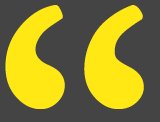Another dot.workflow example
A designer works with raw material providers and fabrics producers to create a new collection for warm winter outfits.
Once the work is completed, dot.admin organises a photo shoot both of the single items and of outfit combinations worn by fashion presenters. Depending on the size of the collection dot.admin might also organise a fashion shown, tape it and add it to the dot.website.
When the photos are ready, dot.admin calculates the prices and the minimum order volumes for each item in cooperation with the dot.designer.
Once all data is complete, dot.admin adds the new items to the dot.websites and adds keywords and categories so that the items can be found by the prospective customers.
When a customer goes online, they can use all sorts of filters to find what they are looking for, from fabrics, moods and sexual orientation to year of the outfit, surreal designs, outfits inspired by music and much more.
The customer also sees whether an item has already been ordered and where the price presently stands.
With regard to ordering, there are several scenarios:
- The item has not been ordered yet, but it only needs ten orders to go into production so the customer clicks on order.
- The item has not been ordered yet, but it needs ten thousand orders to go into production so the customer can’t be bothered, or they like the item so much that they tell all their friends to place an order too, and those friends tell their friends and so on …
- The item has already reached its minimum order volume, and the customer places the order, or decides to wait until the price falls. In the latter case the customer could place an order for a fixed price. Say, they will buy once the price is at €77.
If the customer orders an item, they pay via the dot.website.
If an item has reached its minimum order volume, dot.admin transfers the order details to the workshop, finds a fitting raw materials and materials provider, and makes sure that the workshop gets everything it needs to produce the ordered items.
Once the items are produced, the dot.workshop informs dot.admin, who inform the customer.
The customer can decide at the time of the order whether the purchases should be delivered, or whether the customer prefers to try them on in the dot.workshop. This decision can be postponed until the customer is informed that the items are ready. The latter makes sense, because then the customer can decide spontaneously whether they want to collect their purchases or get them delivered.
If the customer decides to go to the dot.workshop, they will find a pleasant, cosy customer area where they can try on their purchases.
If something doesn’t fit (as in too tight or too loose), the workshop can make adjustments.
If something doesn’t fit (as in, it doesn’t look the way the customer imagined), then the customer can leave the purchase at the dot.workshop. dot.admin will return the money to the customer, and the dot.workshop offers the item in the dot.showroom.
If the customer likes what they see, all is well.
If the customer opts for a delivery, then the workshop will send a dot.cargo bicycle. It would be best if the customer could then try on the items, and if a return or adjustment became necessary, the cyclist could take the item back directly.
Each dot.workshop works for a specific area or region, depending on the population density.
Two additional notes
- It is possible for a designer to apply for a budget to create a collection.
- Every item on the dot.website is available indefinitely, provided the minimum order number is reached at a workshop.

The idea is to pass designs to dot.workshops. Get a percentage for your ideas, and give others a change to make a living rather than wasting money on advertising, branding, transport and packaging, and still earn money. I call that pretty clever!
notes for dot.

Say a designer comes up with a great look and everyone wants it, then the designer licences his creation to any local producer who wants to offer this design. The designer gets seven percent for the licence and the rest goes to the local producer. This way no single brand sweeps the market while the market can still buy the one and only fantastic outfit. That’s one way to ensure that no giants emerge.
notes for dot.

